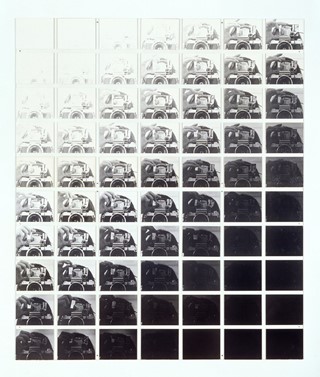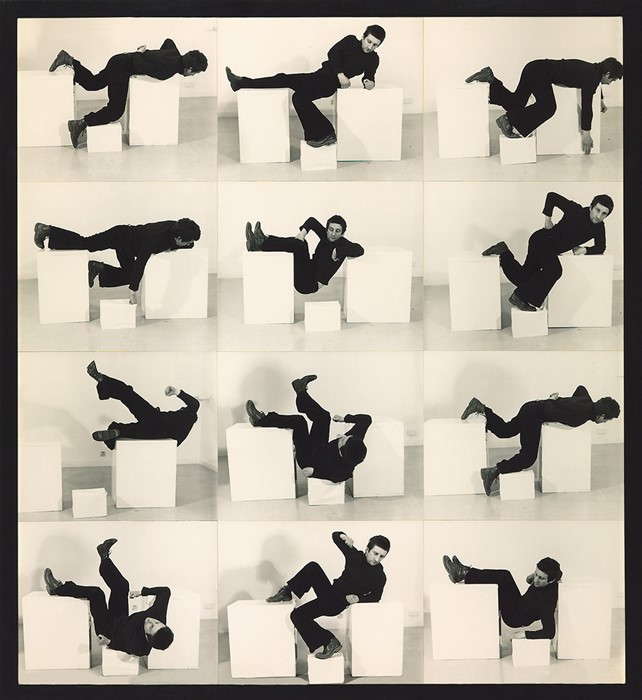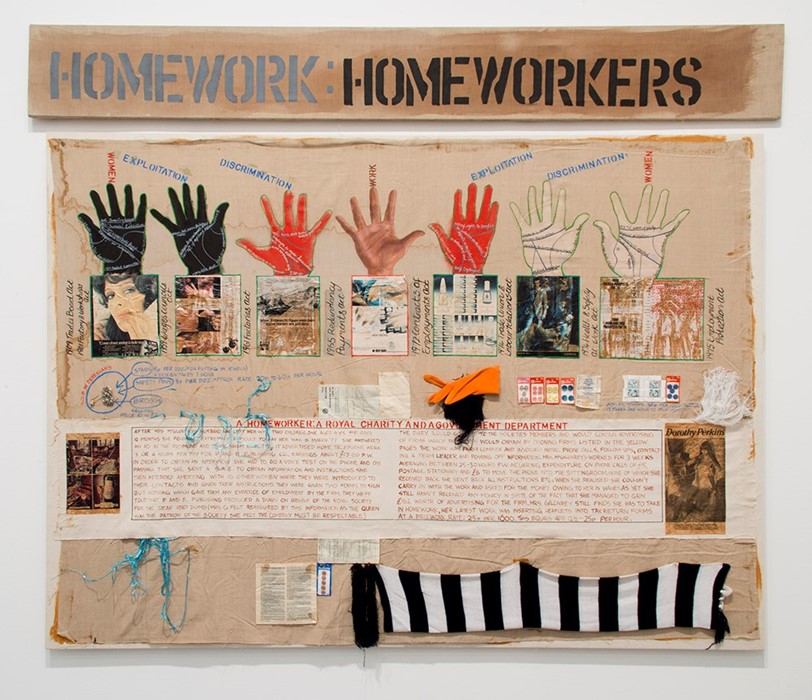An enticing new exhibition at London's Tate Britain explores the birth and evolution of conceptual art in the UK
At the start of the 1960s, emerging British artists such as Bruce McLean and Richard Long began resisting traditional art thinking by creating works in which the focus was placed on concept and ideation, as opposed to form or beauty. This critical shift is newly explored in an insightful new show at London's Tate Britain, titled: Conceptual Art in Britain 1964–1979. Comprised of experimental photographs, prints and large-scale installations, the exhibit charts the birth of the movement and its key purveyors, five of whom we have highlighted below.
Keith Arnatt: Photography as Art
Keith Arnatt played a crucial role in distinguishing photography as a form of art in itself. He once wrote that, “Making a distinction between, or opposing artists and photographers is, it strikes me, like making a distinction between, or opposing, food and sausages – surely odd.” Arnatt’s first photographic performance project, Self Burial (Television Interference Project) was created for a German television channel over a nine-day period during which the usual broadcast was inexplicably interrupted and showed a two-second still photograph of the artist in which he was getting further and deeper into a dug hole each day. Arnatt was using the tools of photography and humour to tackle a serious and controversial topic of the time: the dematerialisation of the art object.

Richard Long: Leader of Land Art
Bristol-born Richard Long studied art at Central Saint Martins in London from 1966 under the tutelage of English abstract sculptor Anthony Caro. A year into his studies Long decided to hitchhike home to Bristol. It was during this fortuitous journey that he stopped in Wiltshire and walked up and down an area of grass capturing the resulting mark on the ground in a photograph he titled A Line Made by Walking. It was this simple act that began a lifelong commitment to what became known as Land Art, an art movement that Long has been closely associated with ever since. He transformed the simple act of walking into a sophisticated body of work that is shaped by an unexpected philosophical and conceptual monumentality. Speaking of his art Long commented, “My work has become a simple metaphor of life. A figure walking down his road, making his mark. It is an affirmation of my human scale and senses.”

John Hilliard: Camera Paradox
“I have sought to conduct a critical interrogation of photography as a representational medium, but also to disclose and celebrate its specificity,” wrote artist John Hilliard who initially began his career as a sculptor only using photography to record his works. From the 1960s Hilliard was making site-specific installations made and constructed from ephemeral materials which led him to the realisation that even when the camera is simply used for neutral documentation there was an intrinsic bias in representation that he found philosophically problematic. This dilemma is perfectly encapsulated in the work entitled Camera Recording its Own Condition (1971), which features a grid of 70 images where the artist placed his camera in front of a mirror with each image different from the other by alternating film speed, exposure time and aperture size. The work is a celebration of conceptual genius in which the lines between subject, object and medium are paradoxically blurred.

Bruce McLean: Renegade Artist
Scottish artist Bruce McLean was taught by Anthony Caro and Phillip King whilst studying art at London's Central Saint Martins. He abandoned their formalist tendencies and defiantly rejected the traditional studio-based production methods to make art that was impossibly controversial and difficult for museums or collectors to acquire and display in the normal way. In Pose Work for Plinths I (1971) McLean positions himself in varying poses on three plinths in a monochromatic photographic grid. The images are intended to be a humorous pastiche of Henry Moore's celebrated reclining figures yet here the artist finds himself awkwardly draped, squashed and squeezed around three different sized white plinths.

Margaret Harrison: The Female Gaze
Artist Margaret Harrison explores issues of gender politics in her work. In 1971, she started a series of delicate drawings which depicted cartoon-esque women suggestively posing with oversized fruit or domestic objects, which Harrison suggested "questioned the idea of having a fixed sexuality". That same year police closed an exhibition of her work which included a piece that showed Playboy magnate Hugh Hefner as a naked bunny girl. In Homeworkers (1977) she used collage to incorporate gloves, brooches, buttons and safety pins as part of a critique of women's labour rights.
Conceptual Art in Britain 1964 – 1979 is on display at Tate Britain from April 12 – August 29, 2016.
